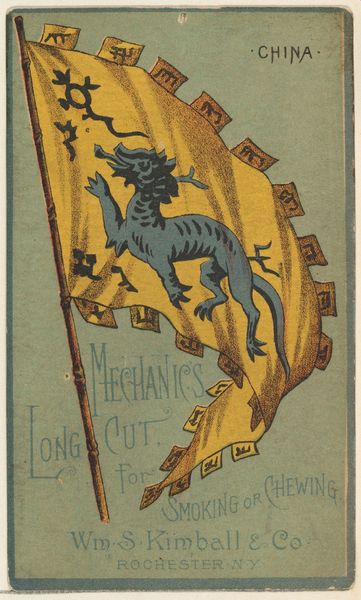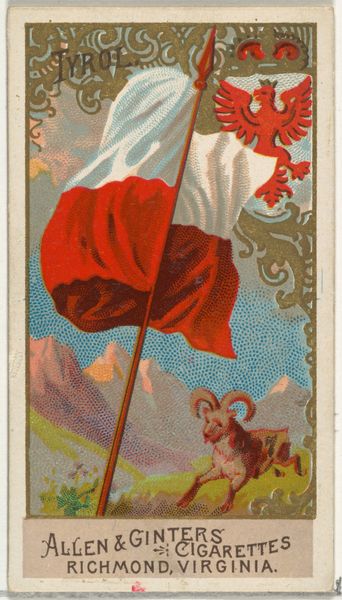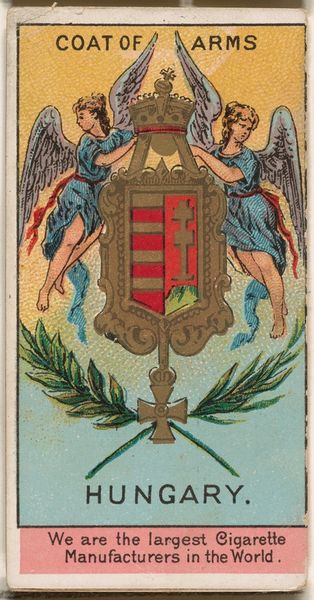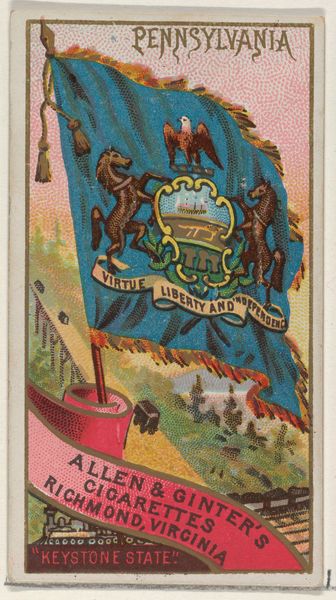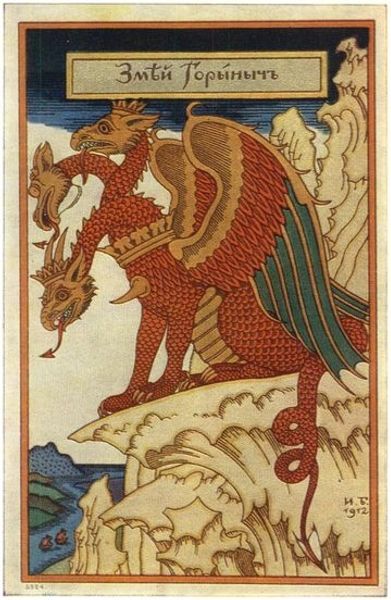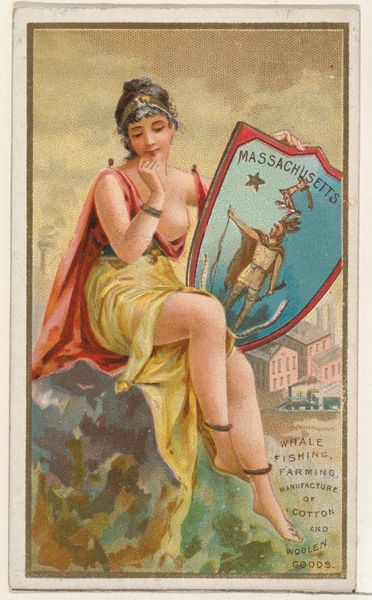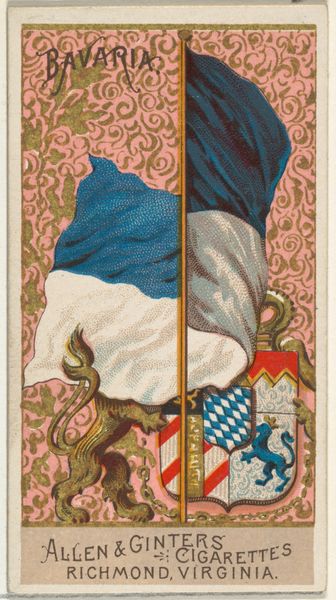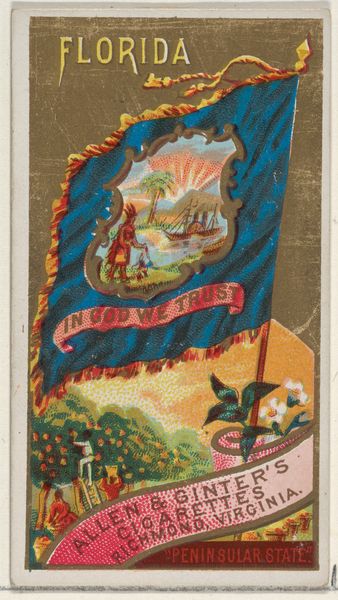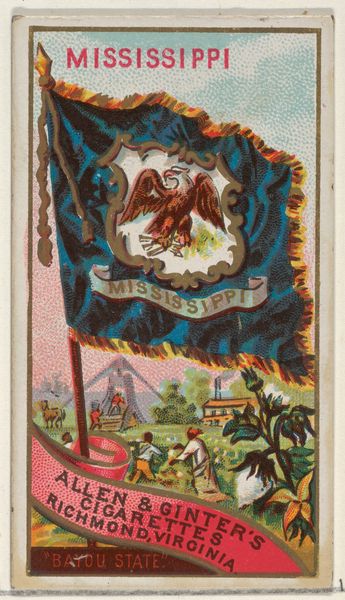
China, from the National Flags series (N195) issued by Wm. S. Kimball & Co. 1891
0:00
0:00
drawing, graphic-art, print, poster
#
drawing
#
graphic-art
# print
#
caricature
#
asian-art
#
caricature
#
orientalism
#
poster
Dimensions: Sheet: 4 1/4 × 2 9/16 in. (10.8 × 6.5 cm)
Copyright: Public Domain
Curator: This is "China," a chromolithograph from the "National Flags" series, created in 1891 by William S. Kimball & Company as part of a product advertisement. It now resides at the Metropolitan Museum of Art. What are your first impressions? Editor: It strikes me as strikingly graphic, almost cartoonish. The flag with that rather ferocious-looking blue dragon really pops against the gold, and the way the design occupies almost the entire space is quite bold. Curator: These cards were included in packages of tobacco products. It’s interesting to consider the message they sent to consumers about China, the "Orient", and the rise of nationalism during that era. There's definitely a strong sense of Orientalism here. Editor: Absolutely. The stylized dragon and the decorative border covered in text definitely lean into Western ideas of the exotic East. But I'm drawn to the visual elements—the layering of colors, the repetition of shapes creates rhythm and some visual tension. It feels intentionally designed to catch the eye on a crowded store shelf. Curator: Consider, too, how images like this helped shape popular perceptions of China at a time when the West was increasingly engaging with and, frankly, often exploiting Asian nations. This wasn’t neutral; this was soft power at play. Editor: True, this isn't just aesthetics; there’s a real politics of representation at play here, turning a complex nation into a digestible and easily marketable image. But still, there's an undeniable skill in how those political ends are translated into visual form. The limited color palette works wonders. Curator: It’s a potent example of the power of visual culture and commerce intertwining, reflecting a specific, arguably skewed, perspective on a nation. What appears attractive on the surface contains a darker context worth reflecting on. Editor: It’s a powerful reminder that every image is not just what it is, but also what it does. Seeing that so clearly, through even this little advertisement, is genuinely enlightening.
Comments
No comments
Be the first to comment and join the conversation on the ultimate creative platform.

